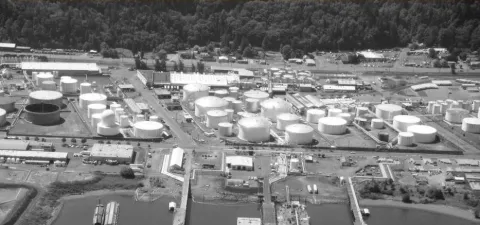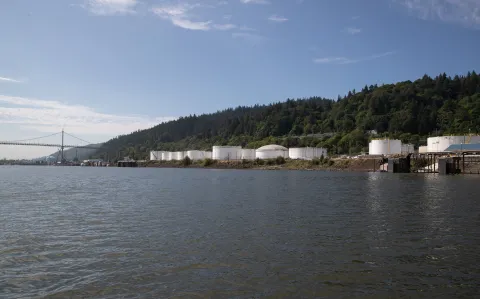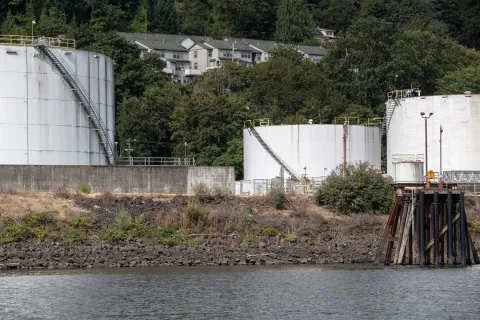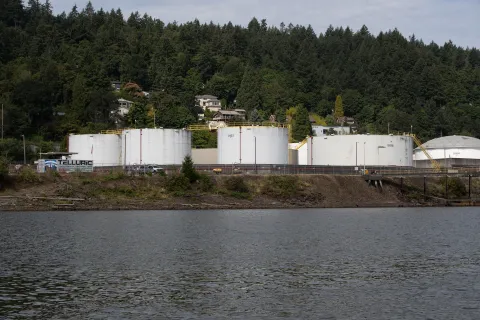

In 2020, Multnomah County Office of Sustainability and the City of Portland Bureau of Emergency Management commissioned a study of the Critical Energy Infrastructure Hub in Northwest Portland. The study is intended to characterize and quantify the anticipated damages from the CEI Hub in the event of the Cascadia Subduction Zone (CSZ) Earthquake.
The CEI Hub is a six-mile stretch of industrial development along the west shore of the Willamette River. More than 90% of all liquid fuel in Oregon is stored at facilities in the CEI Hub. This includes the gas and diesel supply for the Portland metro area, as well as all of the jet fuel for the Portland International Airport. Other hazardous materials are also stored at the CEI Hub.

The CEI Hub — built before our current understanding of the region’s earthquake risk — sits on unstable soil subject to liquefaction and lateral spreading in an earthquake. The CEI Hub is built on soils that geologists anticipate will be subject to liquefaction (when the water table rises during an earthquake and loosens soils making those soils act more like a liquid than a solid) and lateral spreading (when the soils will spread toward the Willamette River). Because the CEI Hub is so close to the Willamette River and the dense urban core in the City of Portland, the risk of an accident, spill, or major infrastructure failure is particularly concerning as the region’s earthquake’s risks are now well-known and well-documented. There is an estimated 26% likelihood of a major seismic event in the next 50 years.
The study findings reinforce the public concerns about the facilities in the hub.

- The study estimated that a CSZ earthquake would result in total potential releases from the materials stored in tanks at the CEI Hub range from 94.6 million to 193.7 million gallons. This is equivalent to the size of the spill at the BP Deepwater Horizon oil spill disaster in the Gulf of Mexico that was the country's largest oil spill to date.
- The study found that of the tanks for which year-built data was available the average tank was built in 1954, well before modern seismic standards had been established.
- The monetized costs could range up to $2.6 billion and based on prior spills, total costs and damages would likely be many multiples of the monetized amount.
- Oil releases from the tanks to the river would spread downstream all the way to the Mouth of the Columbia River.
Multnomah County will be working with state and local partners to determine next steps to ensure that the facilities either upgrade their infrastructure to modern seismic standards or retain liability coverage to ensure the public can be made whole in case of a disaster.
You can read and download the report below.
- Document
- Document
- Document
Impacts of a Cascadia Subduction Zone Earthquake on the CEI Hub
- Document
Costs of Impacts from Cascadia Subduction Zone Earthquake at CEI Hub
- Document
Financial Responsibility for Damages Resulting from a Spill at the CEI Hub
- Document
- Document
